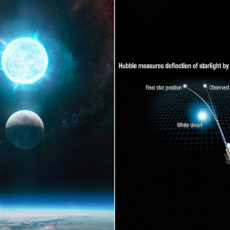
NASA / ESA’s Hubble Space Telescope recently observed a shimmering spiral galaxy, classified as UGC 11860, located 184 million light-years from Earth in the constellation Pegasus. While things may look calm at first glance, the galaxy was host to an immensely energetic stellar explosion.

Astronomers came to this conclusion after detecting a supernova explosion, which is essentially the catastrophically violent end of a massive star’s life, in UGC 11860 during 2014. They utilized Hubble’s Wide Field Camera 3 (WFC3) to search through the aftermath and analyze the lingering remnants of this massive cosmic explosion. WFC3 has a spectrograph capable of dissecting starlight in visible as well as infrared light.
- LEGO NASA Space Set - This adult LEGO set features the Space Shuttle Discovery and the Hubble Space Telescope from NASA’s 1990 STS-31 mission,...
- Solar System Exploration - Unlock the mysteries of our solar system with this engaging 2,354-piece project, packed with authentic details and...
- Shuttle Features Galore - The space shuttle model has an opening payload bay, retractable landing gear, opening cockpit, moving elevons, space arm,...
One team explored UGC 11860 to understand more about the star systems that eventually meet their demise in supernovae. The hugely energetic processes during supernova explosions are predominantly responsible for forging the elements between silicon and nickel on the periodic table,” said NASA.






